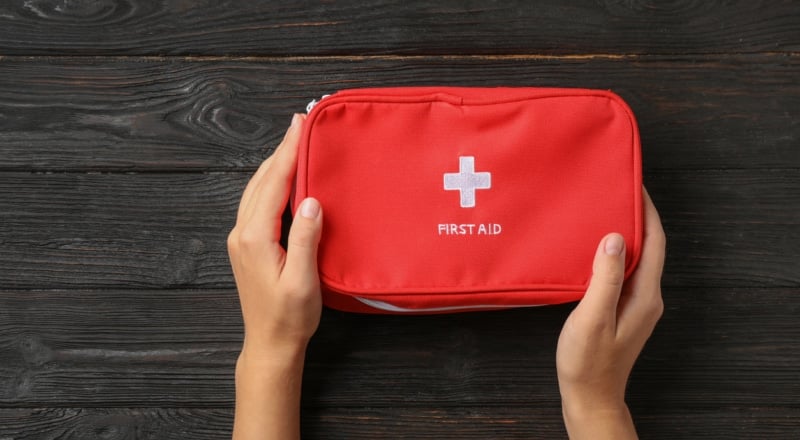How to care for self harm wounds
If you have self harm wounds, it’s important to look after them to avoid infection

Self-harm can happen when someone is struggling to deal with overwhelming or difficult emotions. Self-harm can happen when someone is unable to otherwise express how they feel, or when trying to release tension from holding their emotions in.
If you are self-harming, this is a sign that you are struggling to cope with emotional difficulty or stress in your life. You can seek help from your GP, a counsellor, or an organisation like Pieta. With the right support, recovery from self-harm is possible.
There are a number of ways that a person might self-harm, but if you are hurting yourself, it’s important to know how to care for any wounds you have so that you can heal properly and avoid infection.
Learn more about living with your scars and how you can bring your self-harm to an end.
Being prepared to care for wounds
Being prepared can help you to properly care for wounds and avoid any further damage or risk of infection. Take time to learn about what to do if you have self-harmed, how to tell if you have an infection, and what you need to look after your wounds.
First aid box
Having a first aid box will help you to ensure you have everything you need to look after your wound. Keep an eye on what you have in your box, and make sure to replace what you’ve used so that you don’t run out. Things you will need in your first aid box include:
- Sterile dry dressings
- Scissors
- Bandages
- Tape
- Wound closure strips (also known as Steri-strips, sticky tape that holds a wound closed)
- Sterile absorbent pads
- Alcohol swabs and disinfectant
What to do after you have self-harmed
After any person is injured or wounded, it’s important that it’s dealt with straight away – the same is true for self-harm wounds.
Cuts
If you have cut yourself, the first thing that needs to be done is to stop the bleeding.
- Take a clean, sterile pad and hold it against the wound. Press down to try and stop the bleeding.
- If the bleeding still hasn’t stopped after applying pressure for 10 minutes, go to the closest A&E.
- If the cut is not deep, cover with sterile dressing and seal the edges to prevent infection. You will need to change this dressing daily. Use this as a chance to monitor for any signs of infection.
- If the cut is deep or you think there could be damage to tendons (connective tissue that connects the muscle to the bone) or ligaments (connective tissue that connects bone to bone), go to the closest A&E.
If there is blood spurting from the wound, you may have hit an artery – call 999 or 112 immediately.
Learn more about what to do in a self harm emergency.
Burns
If you have burned yourself, here are the steps to follow:
- Place the burn under cool tap water for 20 minutes to prevent it from burning any further.
- If there are blisters, do not burst them. Seek help from your GP or visit the closest A&E so that they can assess how bad the damage is and what type of dressing you might need. Monitor for any signs of infection and go back to your GP or the emergency room if it is showing signs of infection.
- If there are no blisters, use an after sun lotion to prevent the skin from drying out. Monitor for any signs of infection and go to your GP or go to the closest A&E if it is showing signs of infection.
- Do not burst any blisters you might have, as this can cause an infection. If blisters do burst at any time, rinse with warm water to reduce bacteria.
Learn more about what to do in a self harm emergency.
How to know if a wound is infected
While your wound is healing, you will need to change the dressing and take a look at it every day. Use this as a chance to monitor for any signs of infection so that you can prevent it from getting any worse.
A wound can become infected if the tool that was used to create the wound was not clean, if your hands are not clean when changing dressing, or if dressings are not clean or not applied. Disinfecting any tools that are used to self-harm is also important for preventing infection. It also helps to make sure you have your first aid supplies on hand.
Signs of infection include:
- Pus in the wound
- An increase in fluid leaking from the wound
- A smell coming from the wound
- Redness spreading around the area (cellulitis)
- The wound has not healed after four weeks
- The wound starts to bleed again
- Pain, heat, swelling, or tenderness in the area.
If you are showing any of the above symptoms, you may have an infection. You will need to visit your GP as antibiotics or a different dressing might be needed.
If left untreated, infections can cause a lot of pain, can lead to blood poisoning or illness, and can even be fatal.
How to care for wounds
In order to prevent infection and encourage your wounds to heal, you will need to monitor them and change dressings daily. While your wound is healing, avoid getting any soaps or bath products near it.
How to change dressings
Follow these steps for changing your dressings:
- Wash your hands with warm water and soap and dry thoroughly.
- Carefully remove the old dressing and throw it in the bin. If the dressing is sticking to the wound, avoid pulling or ripping it off as this could re-open the wound. Instead soak it in warm water until it comes off.
- Clean the wound with warm tap water.
- Carefully dry around the wound with a clean towel, but do not touch or rub the towel against the wound, as this could allow fibres to get in.
- Look for any signs of infection now that your wound is clean and dry.
- Place a new, sterile dressing on the wound and seal the edges.
- Finish by properly washing and drying your hands again.
If your wound is leaking a lot, you will need to change the dressing more than once. Visit your doctor if this is happening.
Dealing with scars
Marking or wounding the skin causes scarring, which is why people who self harm often end up with semi permanent or permanent scarring. Some people feel self conscious about their scars and might avoid wearing certain clothes that reveal them. If you are struggling to feel comfortable with your scars, read more about living with self harm scars.
Getting help for self harm
If you are struggling with self harm, you are not alone. There are people and organisations out there to support you.
Remember, self harm is a significant symptom of a much bigger problem. Managing your wounds from self harm is not dealing with the main issue of emotional stress and difficulty. Talk to someone about what’s going on and make an appointment with your GP who can help you and direct you to services in your area. If you feel your GP is not listening to you, then find another GP who will.
Pieta are there to talk for free at 1800 247 247 any time of the day or night to talk to someone, or text HELP to 51444.
If you are in college, there may be free or affordable counselling support on your campus. If you are not in college, your GP can help you access local counselling services.
The Traveller Counselling Service
If you are a young Traveller and would like to speak to a counsellor who specifically works with the Travelling Community, the Traveller Counselling Service can support you. The service works from a culturally inclusive framework which respects Traveller culture, identity, values and norms and works from a perspective of culture centred counselling and psychotherapy. They offer counselling both in person and online.
- Landline: 01 868 5761
- Mobile: 086 308 1476
- Email: [email protected]
Other articles on reducing self harm:
Feeling overwhelmed or want to talk to someone right now?
- Get anonymous support 24/7 with our text message support service
- Connect with a trained volunteer who will listen to you, and help you to move forward feeling better
- Text SPUNOUT to 50808 to begin
- Find out more about our text message support service
There are several different ways to reduce harm and find support for self harming. You may need to try a few different methods and supports until you find the one that works best for you. For information on self harm reducing and finding supports visit our Mental Health section.






